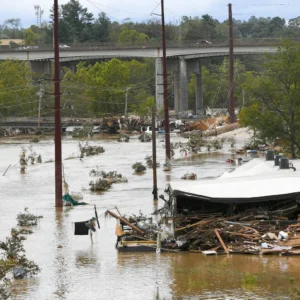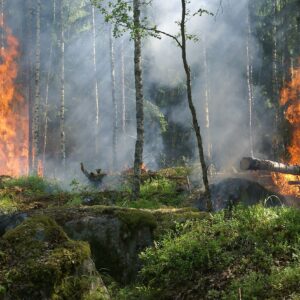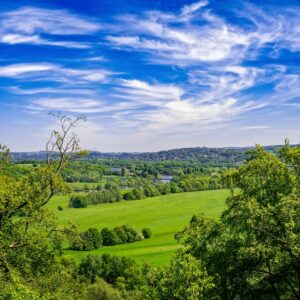My older son recently turned four. These days, his fantasy world is composed of trains and their tracks. It seems that no matter where he is or what he’s doing, my son is in train world. So perhaps it’s not surprising that the books I got him, which he’s not quite old enough to appreciate for their stories, fail to entice him even with their beautiful illustrations, as I had hoped they might. Those would be books by Robert MacFarlane, Gerald Durrell, James Herriot, and the classic Dinotopia. None involve trains.
I remember that power of fantasy, how you can transfigure the entire world when you’re a child. I retained that power up to adolescence. After that, for most of us, it’s a long slog to re-enchantment. There’s plenty of time yet for me to equip my sons for that task. But equipment one must have, and that’s why I bought the books that I did. I want my boys to have the kind of stories and poetry and images that will help them one day love the world out-of-doors.
And that’s rather odd, isn’t it? — that I should buy books for my children if what I want for them is to cultivate attention to non-human creation. The library on the one hand, the woods on the other: both made of the same stuff, and the wind in one world blows from sea or sunrise, the breeze in the other from the shuffle of pages. We naturally juxtapose these worlds, but my instinct when a boy was to combine them. I would read outside, in all seasons, and no frontier lay between the world of my books and the hillsides and riversides I would sit upon to read them.
I still read outside when I can manage it, but these days when I read it’s for some purpose extraneous to the reading itself: to grade or to edit or to help me with my own writing. Even reading out of the desire for re-enchantment of the natural world or discovery of a sacred sense of place is still to read as part of a project. But to effect the spiritualization of matter—an idea I picked up from Vladimir Solovyov—one must make the act of writing and reading (and the Earth that we discover in and regain through that language) an end in itself.
It is still occasionally possible for me. When the pandemic lockdown began almost a year ago, I found myself picking up books left and right in a desperate attempt for escape or peace of mind. Few of them helped. I found that the books which were most hypethral—open to skies and weathers, roving out of doors, attention fixed to the simple given things of this earth and the crafts and lore that go with them—those books did help. The one that helped most of all was the first book Rachel Carson published, in 1941: Under the Sea Wind.
What I’ve realized since my son’s birthday is that Carson’s book did for me something like what I hope the books I bought for my sons will do for them someday: or it is the adult version of it, the fantasy that is like yet unlike that of the child. How does Under the Sea Wind accomplish this transfiguration of the natural world? Carson’s techniques are ancient, archaic even:
The summer’s work was done. No more need of bright petals to lure the pollen-carrying bees; so cast them off. No more need of leaves spread to catch the sunshine and harness it to chlorophyll and air and water. Let the green pigments fade. Put on the reds and yellows, then let the leaves fall, too, and the stalks wither away. Summer is dying.
Note the apostrophe—the poetic speaker or narrator’s direct address to the subject of description. Apostrophe to the natural world or its personification (in, say, a nymph) is a hallmark of classical lyric, natural to any culture that feels itself ensconced in a personal cosmos, a world that, when you gaze at it, gazes back.
This is to make the natural world more human (without obscuring that it is not actually human), as when she speaks of the “fever of migration” that overcomes a flock of birds in the Arctic, “consuming with its fires all other desires and passions.” Or it is human like the drama of marriage, and selfhood’s hide-and-seek:
The eels came down came down from the hills and the upland grasslands… they moved across the tidal plain that dropped in six giant steps to the sea. In the river estuaries and in the sounds they joined their mates-to-be. Soon, in silvery wedding dress, they would follow the ebbing tides to the sea, to find—and lose—themselves in the black abysses of mid-ocean.
This language itself is musical according to the most ingrained English prosodies and diction. The geographical setting of Under the Sea Wind is the Atlantic fringe of the New World from Patagonia to the Canadian Arctic. Its historical setting is various, but Carson shows us glimpses of the properly human world as elemental and ancient as her literary idiom:
The fishermen knew that mullet were gathering in schools throughout the sound because of the change in the weather. They knew that soon the schools would run out through the inlet before the wind and then would pass down along the coast, keeping, as the fishermen had told it from one generation to the next,“their right eyes to the beach.”… So the fishermen waited, confident in their generations of tested lore…
We have also the voice of the omniscient and editorializing narrator of a novel. Really I think of this as the voice of the storyteller, traditional mediator of what we now call fiction. Here she is describing the fate of an owl’s nest in an unseasonable spring storm:
The six little owls-to-be were dead in the snow, and by their death, perhaps, hundreds of unborn lemmings and ptarmigans and Arctic hares had the greater chance of escaping death from the feathered ones that strike from the sky.
The last phrase is almost the Homeric epithet for Apollo (a god of the sky) who strikes from afar. But the most potent art at Carson’s command is the Adamic art of naming the creatures. We think of this in the biblical setting as taxonomy, but suppose it were personal names that Adam discovered. Blackfoot, Rynchops, Pandion, Ookpik, Silverbar, White Tip. — These are some of the creatures (birds, here) that Carson names. They do not have personality: this is not beast-fable. And yet the power of naming is very strong and primordial, for it lies near the heart of the human role as it was or is in the childhood of humankind, in the garden of creation.
Perhaps the closest cousin to Under the Sea Wind is J. A. Baker’s The Peregrine, which, though it tracks a raptor in rural modern England, can feel in places like Arthurian romance. What both naturalist writers accomplished was to imbue a landscape with pathos—stark, mature feeling, rather than child’s wonder. They write from the far side of disenchantment.
Jonathan Geltner lives in Ann Arbor MI with his wife and two sons. His translation of Paul Claudel’s Five Great Odes is available from Angelico Press and a novel, Absolute Music, is forthcoming from Slant. He writes more about the meeting of fantasy and fiction with theology, philosophy, music and the sense of place at betweentwomaps.com





